Exploring Agios Efstratios Part Two
After exploring the traditional houses and what remains of the old Chora, I was keen to see other parts of the village. First, a little background information to give some context.
Agios Efstratios consists of just one settlement located in a valley nestled between two ridges and has four main ridges running its length in total. Beyond the ridges are low-lying hills. To call them mountains would be a stretch with the highest peak reaching 298 metres. The island is 11km long and 6km at its widest point.
This photograph was taken from my window seat whilst flying into Lemnos. It gives an idea of the island’s topography and the size of the settlement.
The population census from 2011 states that the island has a population of 270. The information board in the square says that 210 people live permanently on the island. Currently maybe somewhere in between.
Archaeological finds show that Agios Efstratios has been inhabited since Mycenaean times. During the 9th century, Byzantine Emporer, Leo the Armenian imposed iconoclastic decrees meaning that worship of all icons was banned The namesake of the island, the monk Agios Efstratios escaped the regime and arrived on the island seeking refuge in a cave. The cave can be visited close to the beach of Alonitsi, though I didn’t quite make it there on the trip.
During the 14th century, the island was subject to pirate attacks and by the 15th century, the island was abandoned. From 1693 onwards, a new settlement was developed in the location of the current village.
This brings us to more recent history. From 1928 until 1963, political prisoners were exiled to Agios Efstratios. The first political prisoners under the Idionymon law of Venizelos were exiled in the 1930’s. The Idionymon law is the term used in particular reference to a 1929 law directed against left-wing political dissidents who sought to overthrow the government. Literary and creative notables such as poets Kostas Varnalis and Yiannis Ritsos and the recently deceased Chiot and composer Mikis Theodorakis were amongst them.
From 1967 – 1974 Greece was under the right-wing dictatorship of the junta also known as the Regime of the Colonels. This was a dark time in Greece’s more recent history. The military compiled a list of 10,000 dissidents or anyone deemed to hold communist views. These people were systematically arrested and sent into internal exile including to Agios Efstratios. At one time 6000 prisoners were held here, kept in dreadful conditions, makeshift tents with barely enough food to survive and often brutally tortured. Put those numbers into the context of the island’s current bouyant population of less than 300 people and you can imagine the terrible conditions that they lived in.
In 1968, one of the biggest catastrophic events to the island wasn’t of a political nature but was from nature itself. It came in the form of a devastating earthquake that destroyed most of the old chora, the remains of which are scattered around the hillside. The little agricultural that existed in the valley was also wiped out. This was during the early days of the junta that decreed that the island would be rebuilt. However, the old village built from volcanic stone was left in ruins and even demolished. The new village was to be built from pre-fabricated concrete laid out in a uniform grid pattern, I imagine looking something like a military camp. What a contrast to the beautiful two-storey houses built on the promontory overlooking the modern-day port. I can imagine that life in those newly constructed boxes would feel quite soulless.
Having visited the old Chora earlier and documented it in my previous post, the second part of my explorations of Agios Efstratios took me around the main village. Again starting at the port and following the road around to the right, you will come to a low overpass or bridge that’s elevated over a dry riverbed that is reinforced with concrete walls – now a canvas for some interesting street art. The riverbed at the mouth towards the sea is wide which is puzzling considering that the island is arid with little rainfall. Nonetheless, this concrete channel runs the length of the village, almost cutting it in two and requires this roadway to get vehicles from the port to the other side. It also provides a small pond for the local duck population.
On the right is Paralía Oikismoú Agíou Efstratíou (Agios Efstratios Beach), a horseshoe-shaped bay made up of powder-fine, almost grey volcanic sand. Along the first part of the beach, there are all the modern trappings an island could wish for including an outdoor gym, a ping-pong table, a volleyball net and a basketball court. Football nets are also nearby ready to pull onto the beach for an impromptu match. Further along the beach, there is disabled access to the sea.
Whilst walking along this stretch of road, you can’t help but notice the uniform layout of the houses. Your eye is drawn down identical-looking streets where many are subject to roadworks which looks like the installation of new pipes.
For now, I continue on along the back of the beach which has been planted with clusters of palm and tamarisk trees giving shade over seating areas looking out to sea. There is a short row of houses facing the beach and finally the recently built To Akrogiali where I am staying.
Before I take a closer look at the ‘new’ village, I follow the road up alongside To Akrogiali. This is the main and prominent road that can be seen in the aerial photograph at the start of this post. I believe that you can’t truly begin to know a place until you have walked in its landscape. This road takes me up along one of the four ridges that run the length of the island. It’s a fairly easy climb and it isn’t long before I have views over the village.
Just beyond the boundaries of the ‘new village’ is a spread of small holdings set out along the valley floor. The higher I climb the more I can see that the valley is just a swathe of green made up of cultivated vegetation and clusters of trees. Further along the valley, there is a small forest of oak which thrives in the fertile volcanic soil. This is not the same as our own native oak in the UK. My plant identification app suggests that it is a Valonia Oak or a Macedonian Oak. Though with 500 different species of the genus, I cannot be 100% sure. Aggeliki told me later that in the past, the islanders had used the nut from the oak tree to dye clothes. They would crush the nuts and cook them in hot water until the dye was intense enough to immerse the cloth.
Oh, and there are goats – lots of them. The goats are free to roam the island and can be spotted milling about at the back of the beach or climbing over the old abandoned village. One morning I was sitting on my little terrace having a cup of tea when 6 goats ran through the garden right in front of me. In hot pursuit was an elderly lady with a broom chasing them away from her plants where they’d stopped for a mid morning snack.
As I reach the pinnacle of the road I decide that this is as far as I will go. It begins to drop down again at this point, but I don’t know where it leads to. As much as the walk is easy, I’m conscious of going into the back and beyond on my own. “Elderly tourist found dead at the bottom of a ravine” isn’t the epitaph I’d hope for. Just taking a moment to feel the moment and soak in the landscape is like being a battery put onto charge, but this energy fills my soul.
Back down at the beach road, I continue walking past the stone harbour arm to the next beach which technically is just an extension of Agios Efstratios Beach. The Ridge that I’d just walked along comes to an abrupt end at the road but you can see the layers of stone running throughout the rock, maybe millions of years worth of strata – but I’m no geologist. Behind this second bay is a rather industrial view, plant machinery and three large silos isn’t an idyllic backdrop to a beautiful beach. This wasn’t an island with urban planners with a vision at its disposal. This is an island that has been dealt several bad hands. At times, the ultimate goal was survival. Nonetheless, if you ignore the industrial scene behind you, the view is of a beautiful beach and endless sea giving a real sense of remoteness.
I get the sense that the island has changed and is still changing. Everyone is excited about the elections taking place on Sunday and there is a certain frisson in the air. Aggeliki and her family have been supporting one of the candidates and tell me that the island needs change with someone to lead the island into the future. I was told later by Aggeliki that their candidate did win “by one vote!” and they are very positive about the possibilities for Agios Efstratios which includes developing the tourism opportunities.
The ‘new’ village as I’d mentioned before is split into two by the dry riverbed but the grid-like layout is similar on both sides. The houses were all built as identical concrete prefabricated buildings. I can’t imagine what it must have looked like when it was first constructed. Over time, the houses have developed charm, taking on the soul of the occupants who have lovingly made a house their home.
In essence, the homes that most of us live in are essentially an oblong construction – unless you live in a windmill or lighthouse that is. It’s amazing what has been done here by adding an extension or a pitched roof with terracotta tiles. Some families have built pergolas that are now covered in shade-giving vines. Many of the gardens are filled with brightly coloured plants and fruit trees such as pomegranate and orange. One thing that I noticed is that the streets have walkable pavements – a real rarity in Greece and which is why it struck me when I saw them.
At the heart of the village is the primary school, painted in bright pastel colours which is joyful to see. Scattered around the community are several shaded seating areas like the ones along the back of the beach, planted with exotic-looking palms and other shade-giving trees. Places to relax and sit and talk with friends and neighbours.
The one overwhelming feeling I get on Agios Efstratios is what a closely-knit community it is. Like other small villages that I’ve stayed in, you are made to feel very welcome and everyone – and I stress everyone will greet you with a “Kalimera” as you pass them. Sitting in the taverna every evening, I relished in my favourite activity of ‘people watching’. The way that people greeted each other even though they may have only seen each other earlier in the day was heart warming. Mothers taking an evening stroll with a new born baby would command centre stage and watch with pride as the baby is fussed over and smothered with kisses and their cheeks pinched.
More about the island in the next post.


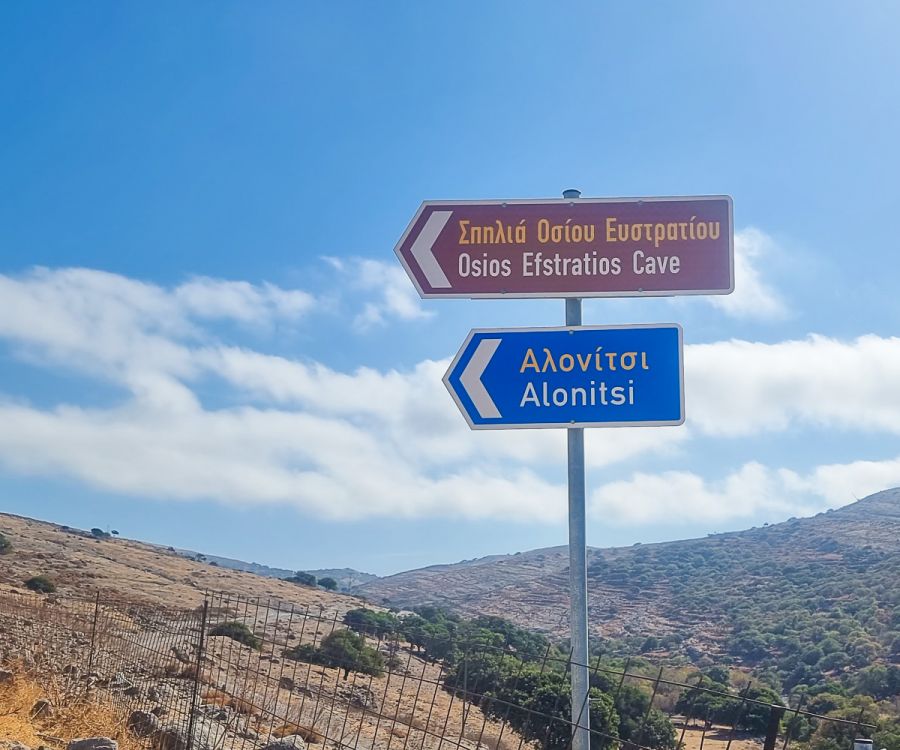
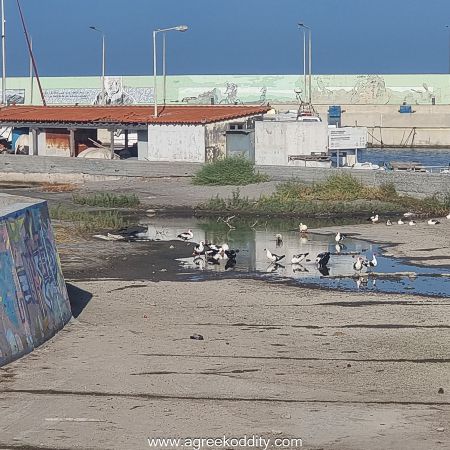
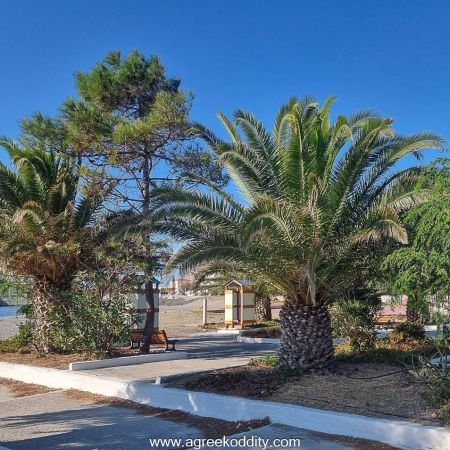
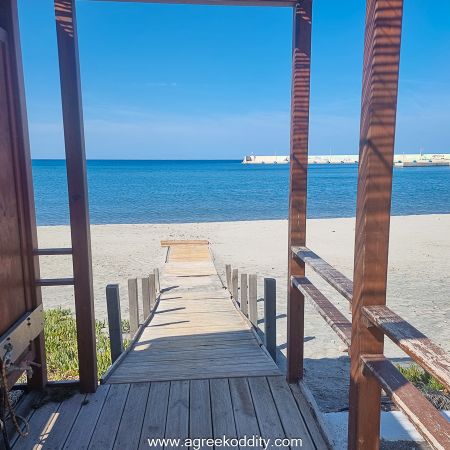
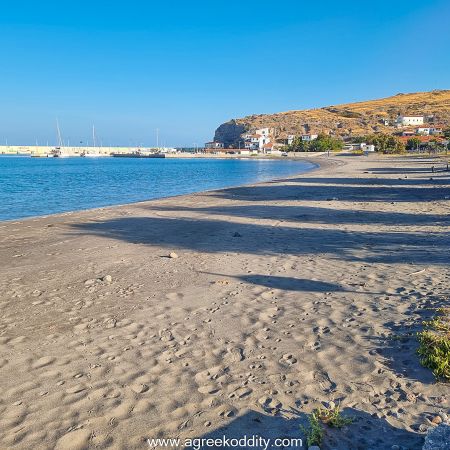
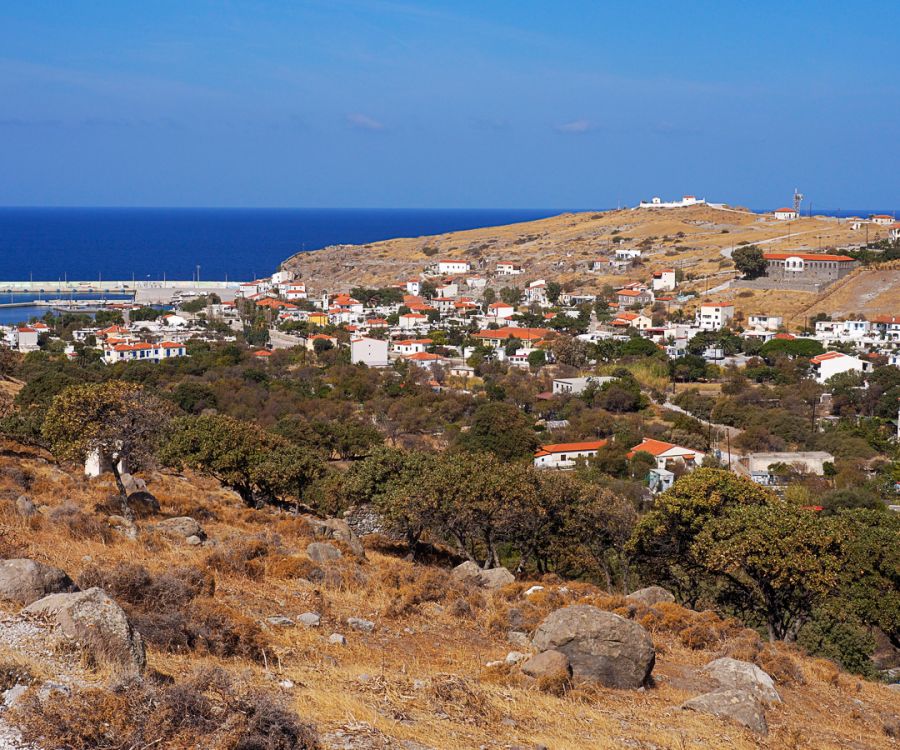


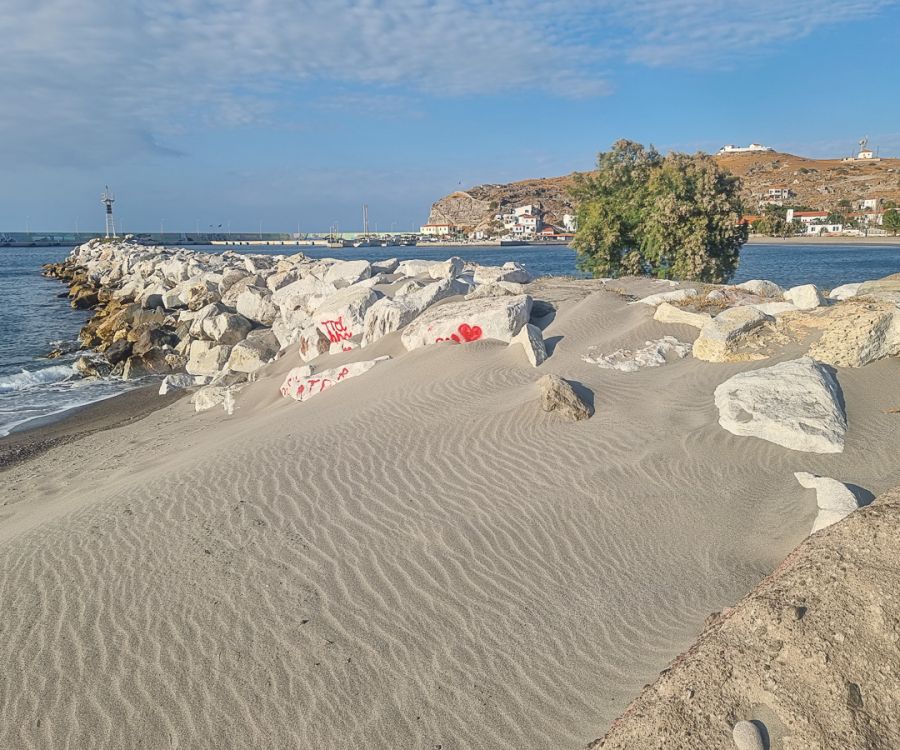
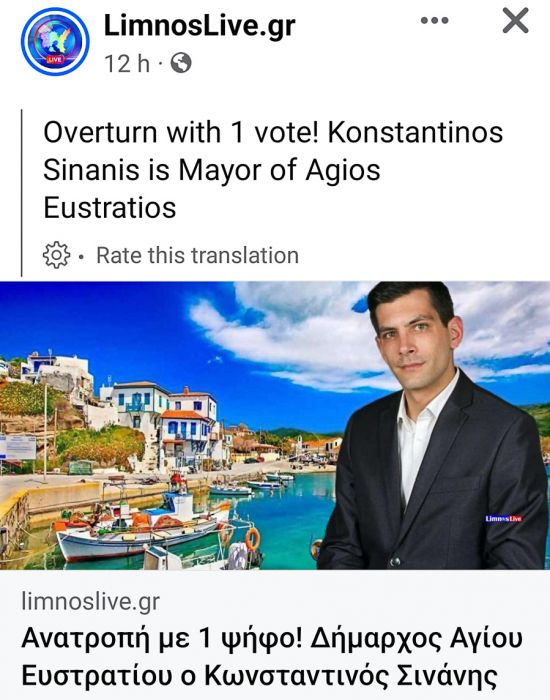
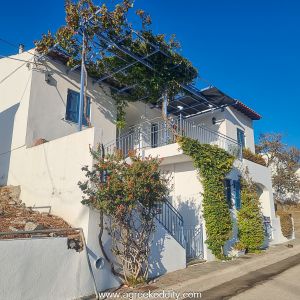


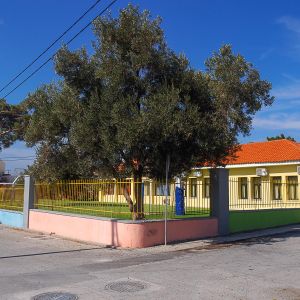


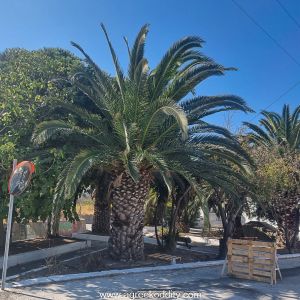

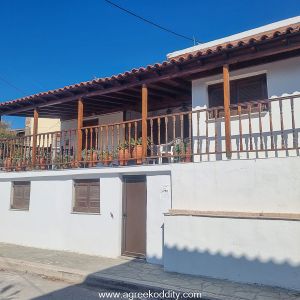






Love it and can’t wait to visit Stephanie – proper Greece ! It worries me that even some of the quieter islands are getting too popular with tourists – I want to visit these small islands before the rest of the world catches on to them.
Absolutely Liz! ❤